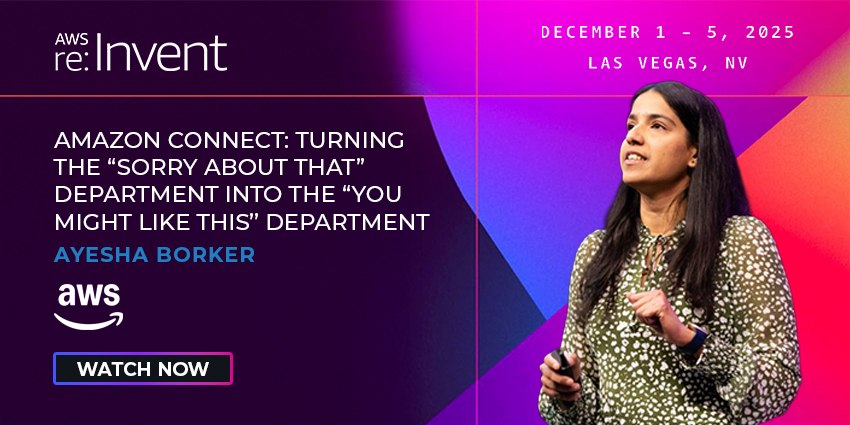Talk of AI-driven transformation in the contact center can often feel disconnected from the day-to-day.
Between glossy headlines and lofty promises, it’s easy to lose sight of what matters most: solving real problems for real teams.
However, for businesses under pressure to improve CX and efficiency, the narrative is shifting.
“Leaders aren’t just asking what AI can do anymore,” says Rémi Guinier, Head of Product, AI Department at Diabolocom.
“They’re asking what it can do for them, right now, and how fast they’ll see results.”
For Culligan, a global water treatment specialist, the answer didn’t lie in experimental tech or speculative use cases.
Instead, it came from targeting a familiar, frustrating workflow: managing voicemails.
With Diabolocom’s help, Culligan rethought this process from the ground up, reducing friction, freeing up agent time, and improving resolution speed.
The results speak volumes: faster service, happier customers, and a 50% cut in voicemail handling time.
Fixing a Workflow That No One Wanted to Own
Before introducing AI, Culligan’s service agents were buried in voicemails.
Each one meant multiple steps: listening, transcribing, interpreting, responding, booking appointments, and routing tickets.
It was monotonous work, and, from a business perspective, more importantly, it was costly.
Rather than chasing trend-driven AI implementations, Culligan and Diabolocom took a focused, practical route: simplify the voicemail experience without sacrificing accuracy or oversight.
“AI doesn’t have to be complex,” Guinier explains.
“Sometimes, it’s about identifying the manual work that’s draining your agents and showing people that automation can really help.”
Instead of bolting on a chatbot or handing off data to external models, Diabolocom leveraged its in-house model trained on English voice data, which is natively integrated into its CCaaS platform.
No switching tools, no external APIs, just seamless automation where it made the most difference.
What Happened Next? Measurable Gains – Fast
Once deployed, the GenAI solution immediately began handling voicemail transcription and analysis.
The time spent processing voicemails was slashed in half.
First contact resolution climbed to 85%, thanks to agents starting each call with crystal-clear context.
No more second-guessing garbled messages or replaying voicemails at double speed.
And that wasn’t all.
Roughly 70% of tickets could now be routed automatically, reducing queue times and ensuring customers reached the right person the first time.
Customer satisfaction also improved, with NPS rising to 79 in just a few weeks.
These weren’t projections on a slide deck; they were real numbers from a real deployment.
Why It Worked: Focus Over Flash
There’s a temptation in the AI world to pitch solutions as all-encompassing. One tool to transcribe calls, resolve tickets, and maybe make your coffee and grab your lunch, while it’s at it.
Diabolocom sees things differently; instead, it looks at specific uses for specific AI tool, as Guinier explains:
“What works is embedding AI where it actually solves a problem.
“Not bolting it on as a gimmick, but integrating it into the workflow in a secure, scalable way.”
That native integration does more than improve performance; it also closes compliance gaps.
With AI running inside Diabolocom’s infrastructure, there are no risky third-party plugins or prompts sent to off-platform models.
Just secure, purpose-built AI that works where needed and scales when it matters.
When Data Sovereignty Becomes a Dealbreaker
For companies like Culligan, especially those in tightly regulated sectors, data control isn’t just a preference; it’s a mandate.
The idea of customer data being exposed to third-party LLMs or absorbed into external training sets was a non-starter.
Diabolocom met this challenge head-on by keeping everything in-house. Its generative models run on its own infrastructure, giving clients like Culligan full ownership and visibility.
“No data sharing with OpenAI or others, no hidden terms – just clean, compliant AI built for contact centers,” Guinier notes.
More Than ROI: Building Trust in AI
Ironically, many of the boldest AI claims in CX today come from tools that struggle to show working examples.
That’s why case studies like Culligan’s matter. They cut through the noise and offer something more concrete: confidence.
“People hear all kinds of things about AI in the media,” says Guinier.
“Our goal is to show that it works; not with smoke and mirrors, but with tangible business gains.”
For Diabolocom, this isn’t experimental. It’s core to its product philosophy: deliver real value from day one without adding unnecessary layers of complexity.
Final Thoughts
AI’s value in the contact center doesn’t need to hinge on vague projections or productivity theories.
Culligan’s experience proves that when the technology is purpose-built and deployed with care, the returns are immediate, trackable, and lasting.
As Emmanuelle Duchesne, Culligan’s Director of Customer Experience and Transformation, put it:
“Diabolocom’s solution has been a game changer for our agents.”
You can also learn more about the company by watching interviews with Frédéric Durand (Founder and CEO) and Collin Ehret (Senior Account Executive).







